 Insight from the Trenches: Mike Caffrey
Insight from the Trenches: Mike CaffreyCommunicating to manage customer perception is one of the most important things utilities need to do when outages strike. I’ve had to testify before regulatory commissions in New Jersey, Maryland and Delaware, as well as national experts, because of community-specific issues in one area that severely impacted our ability to service the entire service territory. Customers only know why they are out if they can see the damage - if not, they will think the company (i.e., you) are the problem. The old saying, perception is reality, is apropos here. The solution? Communicate, communicate, and communicate some more. And when you think you're done, communicate some more!
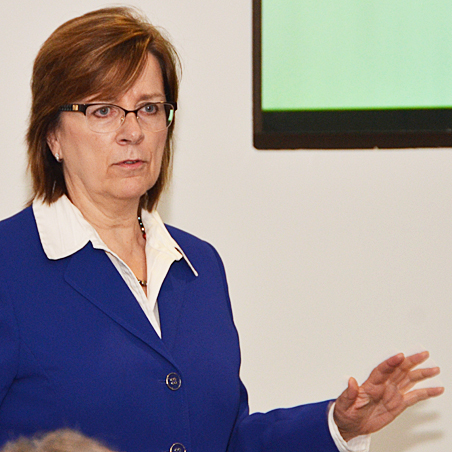 Insight from the Trenches: Eileen Unger
Insight from the Trenches: Eileen UngerWhen I managed a Liaison program at a utility we had eight potential locations to staff – seven county Office of Emergency Management (OEM) locations and a state level OEM. One of our biggest challenges was ensuring that we always had enough trained people filling the roles. First we assigned the usual suspects (i.e. the people already had a job that required them to interact with external stakeholders). Then we had to recruit people with the right skill set from other areas of the company, and this became their ‘storm job.’ Once we had the team, keeping up with the training was key, especially if they weren’t activated for their assignment very often. One of the most important things you can do to make sure your Liaisons have the skills and confidence to do the job is to make sure that you equip them with the tools and training they need to perform their role.
 Insight from the Trenches: Matt Custer
Insight from the Trenches: Matt CusterKnowing when to mobilize a restoration effort - as well as knowing when to avoid premature de-mobilization - is a real challenge in many situations. Some storms, such as misty ice storms, can continue for days with damage continuing to build until you hit a tipping point and a lot trees and wires come down. Although we all want to start the restoration effort as soon as possible, it is critical to wait until the storm completely passes – i.e., when the wind / rain / snow finally stops. It’s a safety issue. Large amounts of rain tend to weaken tree roots, and if there is a strong wind in one direction for a long period of time that suddenly changes direction as the main part of storm passes, then the trees can more easily be blown over and take the electrical lines with it!
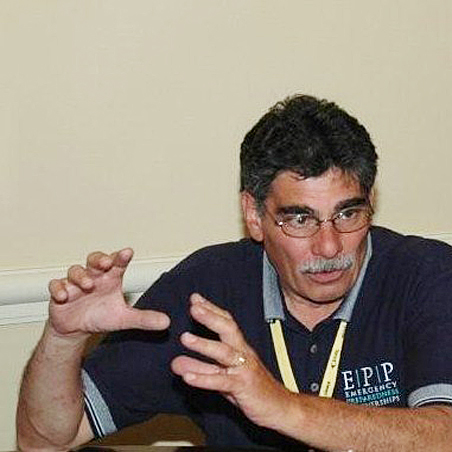 Insight from the Trenches: Mike D'Auria
Insight from the Trenches: Mike D'AuriaBuilding relationships with external stakeholders is critical. But these relationships must be regularly nurtured – meeting once a year is not enough. This seems daunting, but it can pay off in spades. As an example, 24 hours after Hurricane Floyd in 1999, we needed to secure an aerial patrol of the system. All flights were grounded, so I called my primary contact at the county OEM and asked if we could utilize the county chopper and without hesitation, he agreed. Then toward the end of the event, I was informed that we had a surplus 75 hot meals. So, I called my OEM friend to thank him again for the helicopter, and to offer up the 75 meals. He was delighted, and continued to periodically help me out for years thereafter. The key lesson is to make yourself available for external stakeholders, because you never know when you will need them in a pinch.
 Insight from the Trenches: Tom Langley
Insight from the Trenches: Tom LangleySafety issues can derail an entire restoration, because it could distract employees who will want to know if co-workers are ok and what happened. For this and similar reasons, proactive communication when safety is compromised is absolutely critical. At best, proactive communication can mean the difference between an efficient restoration and an inefficient one. At worst, it could mean the difference between life and death. I experienced this first hand while serving as regional director for a large electric utility – a lineman was seriously injured during a thunderstorm restoration in Bridgeton, NJ. I also experienced the unfortunate reality of a fatality in Cape May, NJ. In both cases, proactive communication was delivered that provided the full details of each incident, which clearly helped employees stay focused on the task at hand.
 Insight from the Trenches: Mike D'Auria
Insight from the Trenches: Mike D'AuriaIn April 1996, my region starting getting slammed with wet, heavy snow and ice. Over the next 90 minutes, we experienced what was up until that point the worst storm in the company’s history. We were caught totally off-guard, with major transmission and distribution damage throughout. In the end my company was crucified by the press, and customer satisfaction hit an all-time low. After the event, I met with various municipal officials and first responders, and learned a valuable lesson. I realized that Operations cannot do it all; we needed to properly train staff from other areas of the company to support the mission so that my area could focus on operational issues only. Simply put, having a plan in a big fancy binder on the shelf looks impressive, but it does not replace the need for a solid training program.
 Insight from the Trenches: Matt Custer
Insight from the Trenches: Matt CusterLocal regulatory stakeholders are often first in line to complain when outages impact their constituents. For this reason, it pays to be proactive. Train field personnel to keep you updated so you are ahead of outages, thereby allowing you to deliver proactive updates to regulatory leaders. For example, I always made it a practice to call freeholders when I knew there was an outage coming, which enabled them to respond to constituents when they called. As another example, we once had the Delmarva peninsula on rotating blackouts due to generator outages, extreme heat and voltage issues, and we proactively contacted the state police so they could have a say in what was included in the rotation because they wanted to preserve traffic signals at major intersections. The end result is always more helpful and reasonable stakeholder behavior. There is little doubt – there are a plethora of benefits when it comes to proactive communication!
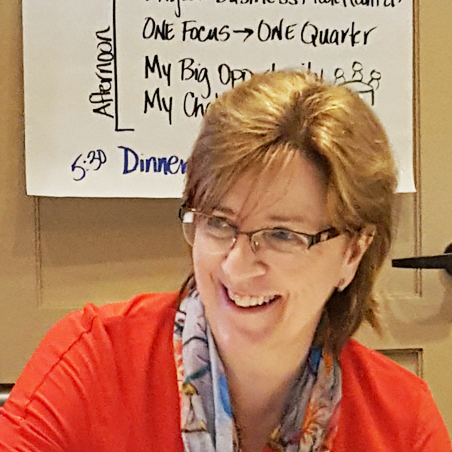 Insight from the Trenches: Eileen Unger
Insight from the Trenches: Eileen UngerImplementing the Incident Command System (ICS) at a utility can be a challenge. Most of the materials and training are geared towards public sector agencies and first responders, making it hard for utility folks to envision how it might work for their operation. One of the ways I like to explain it is to think of it as a temporary management structure that’s used to organize additional employees from around the organization to support the operations folks. I also explain the benefit of adhering to the key features and principles of ICS, while modifying the organizational structure to fit the needs of a utility. One common position that’s often added to a utility ICS structure is a Customer Service position. Our key responsibility is to provide a critical service to our customers, so it’s only natural that such a position is just as important as Safety Officer.
 Insight from the Trenches: Rich Hobson
Insight from the Trenches: Rich HobsonThe single most important element of a good debrief process is speed. The key is to get these issues/ideas collected and cataloged before anyone forgets them. For me, once the initial input is received, I would send out to all Divisions in the company a list of issues brought up and would then begin seeking volunteers of forming teams to address each issue. Under ICS Team Leaders, Directors and Section Chiefs would be responsible for ensuring the issues are addressed and plans are updated. The overall goal is to ensure that issues are addressed ASAP and the Plan is updated. The end result should be a living document that is always up-to-date the next time an event takes place. This hopefully highlights the importance of scheduling debriefs immediately after the restoration is complete.
 Insight from the Trenches: Tom Langley
Insight from the Trenches: Tom LangleyY2K was of great concern to my company due to the programmable chips / computers present in most of the equipment we utilized – such as relays, monitoring and control equipment inside substations, control equipment on the transmission and distribution lines, and remote terminal units in substations connected to the emergency management system. There were serious concerns regarding interconnection points, not just between utilities, but also between computers and equipment. Luckily, after hundreds of hours of preparation, it became obvious early sitting in the control center on New Year's Eve and watching Australia and Asia and Europe have no problems that this would be a non-event. But that’s ok because you never know and therefore, it is critical to be prepared even when the situation in question turns out to be a non-issue.
 Insight from the Trenches: Mike D'Auria
Insight from the Trenches: Mike D'AuriaEnsuring the company can respond to an event proficiently while utilizing all available employees is essential. For me, this became clear after a few back-to-back major events impacted our service territory, a situation exasperated by the difficulty we were having staffing for second shifts. After the dust settled, I contacted HR and asked them to identify management employees that could be used outside of their job classification. The HR Lead sought employees that had multiple roles during their tenure, because diverse experience could be beneficial during a response effort. We put together a presentation to pitch to senior management and get their blessing to move forward. We then began meeting with employees, asking for their support, and assigning second roles outside their normal duties. The employees were open and receptive because they appreciated feeling like they were part of the process.
 Insight from the Trenches: Tom Langley
Insight from the Trenches: Tom LangleyIt is important to realize that help is out there. Oftentimes I have faced a situation that I knew was serious, but did not have enough information to know the extent of the problem or emergency. In these types of situations, it is better to call in leadership or at least set up a conference call as you work to get more information on the problem. Otherwise, you will be behind on the restoration effort right from the start. Simply put, you can never have too much help, but sometimes you may need to convince others that they need help – for example, districts always believe they can take care of their own customers and do not need help from other districts or outsiders. This is not the easiest thing in the world to do, but it can be done with some persistence and an empathetic approach.
 Insight from the Trenches: Rich Hobson
Insight from the Trenches: Rich HobsonBoth the Mid-Atlantic Mutual Assistance Group and the Southeastern Electric Exchange Mutual Assistance Group began conducting conference calls once daily a week in advance and at least twice daily as Hurricane Isabel got closer. Detailed activity logs were developed each day detailing the dates and times of calls, the current forecast at the time of each call, and the resources each team member had available for assistance as well as details of any requests for assistance being made. The same detail was given to the activity logs for each conference call with weather forecasters. When the time came to write the final storm report, all the information from these activity logs made the job of reconstructing the timeline of events for the report much less of an onerous task.
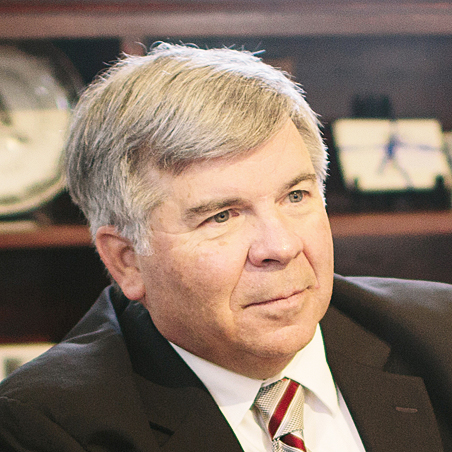 Insight from the Trenches: Matt Custer
Insight from the Trenches: Matt CusterAssigning second roles to union members is tough. Where I worked, the bargaining agreement between the company and the union clearly stated that no employee can be assigned work outside of their job classification. Luckily, I had a good relationship with the union president, so we met and hashed out a plan. The biggest aspect of the plan involved house services. Field employees were asked if they would be willing to be trained in house services work, being paid at the appropriate line rate when utilized. We also asked union employees if they would (voluntarily) be interested in delivering material, picking up debris, managing roadside safety, or driving. I was pleased to learn that most union employees signed up. In fact, it worked so well that an agreement was formalized with the union mandating that all new union employees be trained in their second role duties.
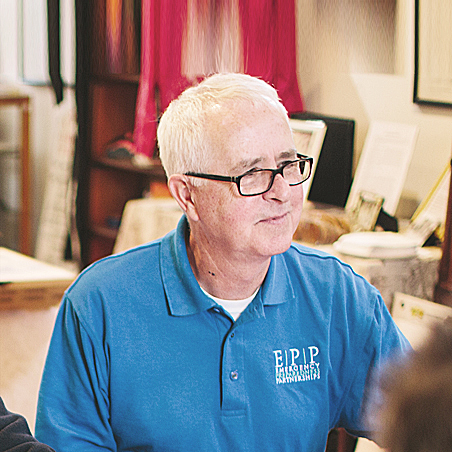 Insight from the Trenches: Rich Hobson
Insight from the Trenches: Rich HobsonThe activity log is one of the most important items that one needs to remember to complete during an event. I learned this when Hurricane Isabel hit the mid-Atlantic region in Sept. 2003. The Maryland Public Service Commission ordered all Maryland utilities to provide a detailed written summary of the event. They wanted to know when each mutual assistance call was held and what resources were requested by each Maryland utility; what resources were available and when, along with what resources were offered; and the timing of weather forecast updates as well as the expected impact on the electrical system. Clearly, any of the utilities that did not have the foresight to have a thoroughly-completed activity log would have been hard-pressed to satisfy the PSC’s requests.
 Insight from the Trenches: Mike Caffrey
Insight from the Trenches: Mike CaffreyCommunicating to manage customer perception is one of the most important things utilities need to do when outages strike. I’ve had to testify before regulatory commissions in New Jersey, Maryland and Delaware, as well as national experts, because of community-specific issues in one area that severely impacted our ability to service the entire service territory.…
 Insight from the Trenches: Eileen Unger
Insight from the Trenches: Eileen UngerWhen I managed a Liaison program at a utility we had eight potential locations to staff – seven county Office of Emergency Management (OEM) locations and a state level OEM. One of our biggest challenges was ensuring that we always had enough trained people filling the roles. First we assigned the usual suspects (i.e. the…
 Insight from the Trenches: Matt Custer
Insight from the Trenches: Matt CusterKnowing when to mobilize a restoration effort - as well as knowing when to avoid premature de-mobilization - is a real challenge in many situations. Some storms, such as misty ice storms, can continue for days with damage continuing to build until you hit a tipping point and a lot trees and wires come down.…
 Insight from the Trenches: Mike D'Auria
Insight from the Trenches: Mike D'AuriaBuilding relationships with external stakeholders is critical. But these relationships must be regularly nurtured – meeting once a year is not enough. This seems daunting, but it can pay off in spades. As an example, 24 hours after Hurricane Floyd in 1999, we needed to secure an aerial patrol of the system. All flights were…
 Insight from the Trenches: Tom Langley
Insight from the Trenches: Tom LangleySafety issues can derail an entire restoration, because it could distract employees who will want to know if co-workers are ok and what happened. For this and similar reasons, proactive communication when safety is compromised is absolutely critical. At best, proactive communication can mean the difference between an efficient restoration and an inefficient one. At…
 Insight from the Trenches: Mike D'Auria
Insight from the Trenches: Mike D'AuriaIn April 1996, my region starting getting slammed with wet, heavy snow and ice. Over the next 90 minutes, we experienced what was up until that point the worst storm in the company’s history. We were caught totally off-guard, with major transmission and distribution damage throughout. In the end my company was crucified by the…
 Insight from the Trenches: Matt Custer
Insight from the Trenches: Matt CusterLocal regulatory stakeholders are often first in line to complain when outages impact their constituents. For this reason, it pays to be proactive. Train field personnel to keep you updated so you are ahead of outages, thereby allowing you to deliver proactive updates to regulatory leaders. For example, I always made it a practice to…
 Insight from the Trenches: Eileen Unger
Insight from the Trenches: Eileen UngerImplementing the Incident Command System (ICS) at a utility can be a challenge. Most of the materials and training are geared towards public sector agencies and first responders, making it hard for utility folks to envision how it might work for their operation. One of the ways I like to explain it is to think…
 Insight from the Trenches: Rich Hobson
Insight from the Trenches: Rich HobsonThe single most important element of a good debrief process is speed. The key is to get these issues/ideas collected and cataloged before anyone forgets them. For me, once the initial input is received, I would send out to all Divisions in the company a list of issues brought up and would then begin seeking…
 Insight from the Trenches: Tom Langley
Insight from the Trenches: Tom LangleyY2K was of great concern to my company due to the programmable chips / computers present in most of the equipment we utilized – such as relays, monitoring and control equipment inside substations, control equipment on the transmission and distribution lines, and remote terminal units in substations connected to the emergency management system. There were…
 Insight from the Trenches: Mike Caffrey
Insight from the Trenches: Mike CaffreyCommunicating to manage customer perception is one of the most important things utilities need to do when outages strike. I’ve had to testify before regulatory commissions in New Jersey, Maryland and Delaware, as well as national experts, because of community-specific issues in one area that severely impacted our ability to service the entire service territory.…
 Insight from the Trenches: Eileen Unger
Insight from the Trenches: Eileen UngerWhen I managed a Liaison program at a utility we had eight potential locations to staff – seven county Office of Emergency Management (OEM) locations and a state level OEM. One of our biggest challenges was ensuring that we always had enough trained people filling the roles. First we assigned the usual suspects (i.e. the…
 Insight from the Trenches: Matt Custer
Insight from the Trenches: Matt CusterKnowing when to mobilize a restoration effort - as well as knowing when to avoid premature de-mobilization - is a real challenge in many situations. Some storms, such as misty ice storms, can continue for days with damage continuing to build until you hit a tipping point and a lot trees and wires come down.…
 Insight from the Trenches: Mike D'Auria
Insight from the Trenches: Mike D'AuriaBuilding relationships with external stakeholders is critical. But these relationships must be regularly nurtured – meeting once a year is not enough. This seems daunting, but it can pay off in spades. As an example, 24 hours after Hurricane Floyd in 1999, we needed to secure an aerial patrol of the system. All flights were…
 Insight from the Trenches: Tom Langley
Insight from the Trenches: Tom LangleySafety issues can derail an entire restoration, because it could distract employees who will want to know if co-workers are ok and what happened. For this and similar reasons, proactive communication when safety is compromised is absolutely critical. At best, proactive communication can mean the difference between an efficient restoration and an inefficient one. At…
 Insight from the Trenches: Mike D'Auria
Insight from the Trenches: Mike D'AuriaIn April 1996, my region starting getting slammed with wet, heavy snow and ice. Over the next 90 minutes, we experienced what was up until that point the worst storm in the company’s history. We were caught totally off-guard, with major transmission and distribution damage throughout. In the end my company was crucified by the…
 Insight from the Trenches: Matt Custer
Insight from the Trenches: Matt CusterLocal regulatory stakeholders are often first in line to complain when outages impact their constituents. For this reason, it pays to be proactive. Train field personnel to keep you updated so you are ahead of outages, thereby allowing you to deliver proactive updates to regulatory leaders. For example, I always made it a practice to…
 Insight from the Trenches: Eileen Unger
Insight from the Trenches: Eileen UngerImplementing the Incident Command System (ICS) at a utility can be a challenge. Most of the materials and training are geared towards public sector agencies and first responders, making it hard for utility folks to envision how it might work for their operation. One of the ways I like to explain it is to think…
 Insight from the Trenches: Rich Hobson
Insight from the Trenches: Rich HobsonThe single most important element of a good debrief process is speed. The key is to get these issues/ideas collected and cataloged before anyone forgets them. For me, once the initial input is received, I would send out to all Divisions in the company a list of issues brought up and would then begin seeking…
 Insight from the Trenches: Tom Langley
Insight from the Trenches: Tom LangleyY2K was of great concern to my company due to the programmable chips / computers present in most of the equipment we utilized – such as relays, monitoring and control equipment inside substations, control equipment on the transmission and distribution lines, and remote terminal units in substations connected to the emergency management system. There were…
 Insight from the Trenches: Mike Caffrey
Insight from the Trenches: Mike CaffreyCommunicating to manage customer perception is one of the most important things utilities need to do when outages strike. I’ve had to testify before regulatory commissions in New Jersey, Maryland and Delaware, as well as national experts, because of community-specific issues in one area that severely impacted our ability to service the entire service territory.…
 Insight from the Trenches: Eileen Unger
Insight from the Trenches: Eileen UngerWhen I managed a Liaison program at a utility we had eight potential locations to staff – seven county Office of Emergency Management (OEM) locations and a state level OEM. One of our biggest challenges was ensuring that we always had enough trained people filling the roles. First we assigned the usual suspects (i.e. the…
 Insight from the Trenches: Matt Custer
Insight from the Trenches: Matt CusterKnowing when to mobilize a restoration effort - as well as knowing when to avoid premature de-mobilization - is a real challenge in many situations. Some storms, such as misty ice storms, can continue for days with damage continuing to build until you hit a tipping point and a lot trees and wires come down.…
 Insight from the Trenches: Mike D'Auria
Insight from the Trenches: Mike D'AuriaBuilding relationships with external stakeholders is critical. But these relationships must be regularly nurtured – meeting once a year is not enough. This seems daunting, but it can pay off in spades. As an example, 24 hours after Hurricane Floyd in 1999, we needed to secure an aerial patrol of the system. All flights were…
 Insight from the Trenches: Tom Langley
Insight from the Trenches: Tom LangleySafety issues can derail an entire restoration, because it could distract employees who will want to know if co-workers are ok and what happened. For this and similar reasons, proactive communication when safety is compromised is absolutely critical. At best, proactive communication can mean the difference between an efficient restoration and an inefficient one. At…
 Insight from the Trenches: Mike D'Auria
Insight from the Trenches: Mike D'AuriaIn April 1996, my region starting getting slammed with wet, heavy snow and ice. Over the next 90 minutes, we experienced what was up until that point the worst storm in the company’s history. We were caught totally off-guard, with major transmission and distribution damage throughout. In the end my company was crucified by the…
 Insight from the Trenches: Matt Custer
Insight from the Trenches: Matt CusterLocal regulatory stakeholders are often first in line to complain when outages impact their constituents. For this reason, it pays to be proactive. Train field personnel to keep you updated so you are ahead of outages, thereby allowing you to deliver proactive updates to regulatory leaders. For example, I always made it a practice to…
 Insight from the Trenches: Eileen Unger
Insight from the Trenches: Eileen UngerImplementing the Incident Command System (ICS) at a utility can be a challenge. Most of the materials and training are geared towards public sector agencies and first responders, making it hard for utility folks to envision how it might work for their operation. One of the ways I like to explain it is to think…
 Insight from the Trenches: Rich Hobson
Insight from the Trenches: Rich HobsonThe single most important element of a good debrief process is speed. The key is to get these issues/ideas collected and cataloged before anyone forgets them. For me, once the initial input is received, I would send out to all Divisions in the company a list of issues brought up and would then begin seeking…
 Insight from the Trenches: Tom Langley
Insight from the Trenches: Tom LangleyY2K was of great concern to my company due to the programmable chips / computers present in most of the equipment we utilized – such as relays, monitoring and control equipment inside substations, control equipment on the transmission and distribution lines, and remote terminal units in substations connected to the emergency management system. There were…
 Insight from the Trenches: Mike Caffrey
Insight from the Trenches: Mike CaffreyCommunicating to manage customer perception is one of the most important things utilities need to do when outages strike. I’ve had to testify before regulatory commissions in New Jersey, Maryland and Delaware, as well as national experts, because of community-specific issues in one area that severely impacted our ability to service the entire service territory.…
 Insight from the Trenches: Eileen Unger
Insight from the Trenches: Eileen UngerWhen I managed a Liaison program at a utility we had eight potential locations to staff – seven county Office of Emergency Management (OEM) locations and a state level OEM. One of our biggest challenges was ensuring that we always had enough trained people filling the roles. First we assigned the usual suspects (i.e. the…
 Insight from the Trenches: Matt Custer
Insight from the Trenches: Matt CusterKnowing when to mobilize a restoration effort - as well as knowing when to avoid premature de-mobilization - is a real challenge in many situations. Some storms, such as misty ice storms, can continue for days with damage continuing to build until you hit a tipping point and a lot trees and wires come down.…
 Insight from the Trenches: Mike D'Auria
Insight from the Trenches: Mike D'AuriaBuilding relationships with external stakeholders is critical. But these relationships must be regularly nurtured – meeting once a year is not enough. This seems daunting, but it can pay off in spades. As an example, 24 hours after Hurricane Floyd in 1999, we needed to secure an aerial patrol of the system. All flights were…
 Insight from the Trenches: Tom Langley
Insight from the Trenches: Tom LangleySafety issues can derail an entire restoration, because it could distract employees who will want to know if co-workers are ok and what happened. For this and similar reasons, proactive communication when safety is compromised is absolutely critical. At best, proactive communication can mean the difference between an efficient restoration and an inefficient one. At…
 Insight from the Trenches: Mike D'Auria
Insight from the Trenches: Mike D'AuriaIn April 1996, my region starting getting slammed with wet, heavy snow and ice. Over the next 90 minutes, we experienced what was up until that point the worst storm in the company’s history. We were caught totally off-guard, with major transmission and distribution damage throughout. In the end my company was crucified by the…
 Insight from the Trenches: Matt Custer
Insight from the Trenches: Matt CusterLocal regulatory stakeholders are often first in line to complain when outages impact their constituents. For this reason, it pays to be proactive. Train field personnel to keep you updated so you are ahead of outages, thereby allowing you to deliver proactive updates to regulatory leaders. For example, I always made it a practice to…
 Insight from the Trenches: Eileen Unger
Insight from the Trenches: Eileen UngerImplementing the Incident Command System (ICS) at a utility can be a challenge. Most of the materials and training are geared towards public sector agencies and first responders, making it hard for utility folks to envision how it might work for their operation. One of the ways I like to explain it is to think…
 Insight from the Trenches: Rich Hobson
Insight from the Trenches: Rich HobsonThe single most important element of a good debrief process is speed. The key is to get these issues/ideas collected and cataloged before anyone forgets them. For me, once the initial input is received, I would send out to all Divisions in the company a list of issues brought up and would then begin seeking…
 Insight from the Trenches: Tom Langley
Insight from the Trenches: Tom LangleyY2K was of great concern to my company due to the programmable chips / computers present in most of the equipment we utilized – such as relays, monitoring and control equipment inside substations, control equipment on the transmission and distribution lines, and remote terminal units in substations connected to the emergency management system. There were…
